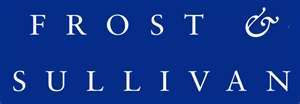North American OEMs Embrace Advanced Safety Features Backed by Strong Legislative Push
 |
MOUNTAIN VIEW, CA -- Aug. 13, 2014: The North American automotive industry has long produced a juggernaut of innovative features efficiently offered in its vehicles, designed on the basis of consumer trends, preferences, safety bulletins and market positioning. Among the various current advanced technologies, safety applications, followed by comfort and convenience are the most favored by original equipment manufacturers (OEMs).
New research from Frost & Sullivan's Analysis of the North American Advanced Features Market and Optional/Standard Strategy of OEMs finds consumers demand seamless connectivity and high-end infotainment features in a car. The research also highlights the lifesaving technologies and features like night vision assist with pedestrian detection or collision warning and mitigation using augmented reality (AR) which are accorded a higher importance compared to other features like power liftgate or ambient lighting in the vehicle.
However, mandating systems such as automatic emergency call (eCall) and rear-view cameras have been delayed due to challenges around wide acceptance in the industry coupled with battling technical obstacles and niche status development. No less, connected car technologies have been given an open platform to innovate and implement in the near future.
For complimentary access to more information on this research, please visit: Frost Research.
"With agencies such as the National Highway Traffic Safety Administration (NHTSA) pushing for standardization of safety technologies in cars, advanced safety applications will be featured as customary commodities in two to three years, followed by functional convenient features," said Frost & Sullivan Automotive and Transportation Industry Analyst Neelam Barua. "For instance, the NHTSA has directed rear-view cameras be made standard fitment by 2018 to make vehicles more intelligent and safer. Already, Honda and Acura have made it standard in all their models/lineup.
However, premium automakers only consider a few features as standard fitment and prefer to offer either optional or advanced feature packages targeting different age groups and geographies at attractive price points. For example, Mercedes Benz CLA has an abundance of advanced features packaged at the price tag of $29,999. On the other hand, certain OEMs are looking to achieve a balance between conventional and alternative technologies to ensure sustainable, efficient and accessible mobility. The idea of zero emissions, zero accidents and zero fatalities is becoming possible as technology progresses.
"To optimize costs, North American OEMs are basing their strategies on the re-launch of models, alternate propulsion systems, and new advertising modes for promotions," noted Barua. "In addition, mass-market OEMs are focusing on fuel economy and emission reduction, while premium OEMs look to leverage inventive features such as laser-based headlamps, heads-up display notifications, reconfigurable instrument clusters, enhanced 'virtual' view of the road using AR, and touch-less gesture controlled infotainment to ensure customer loyalty in the North American market."
Analysis of the North American Advanced Features Market and Optional/Standard Strategy of OEMs is part of the Automotive & Transportation (Frost Automotive) Growth Partnership Service program. Frost & Sullivan's related studies include: Impact Analysis of In-vehicle Advertising in the North American Automotive Infotainment Market, and Future of the Global Luxury Vehicle Market. All studies included in subscriptions provide detailed market opportunities and industry trends evaluated following extensive interviews with market participants.


